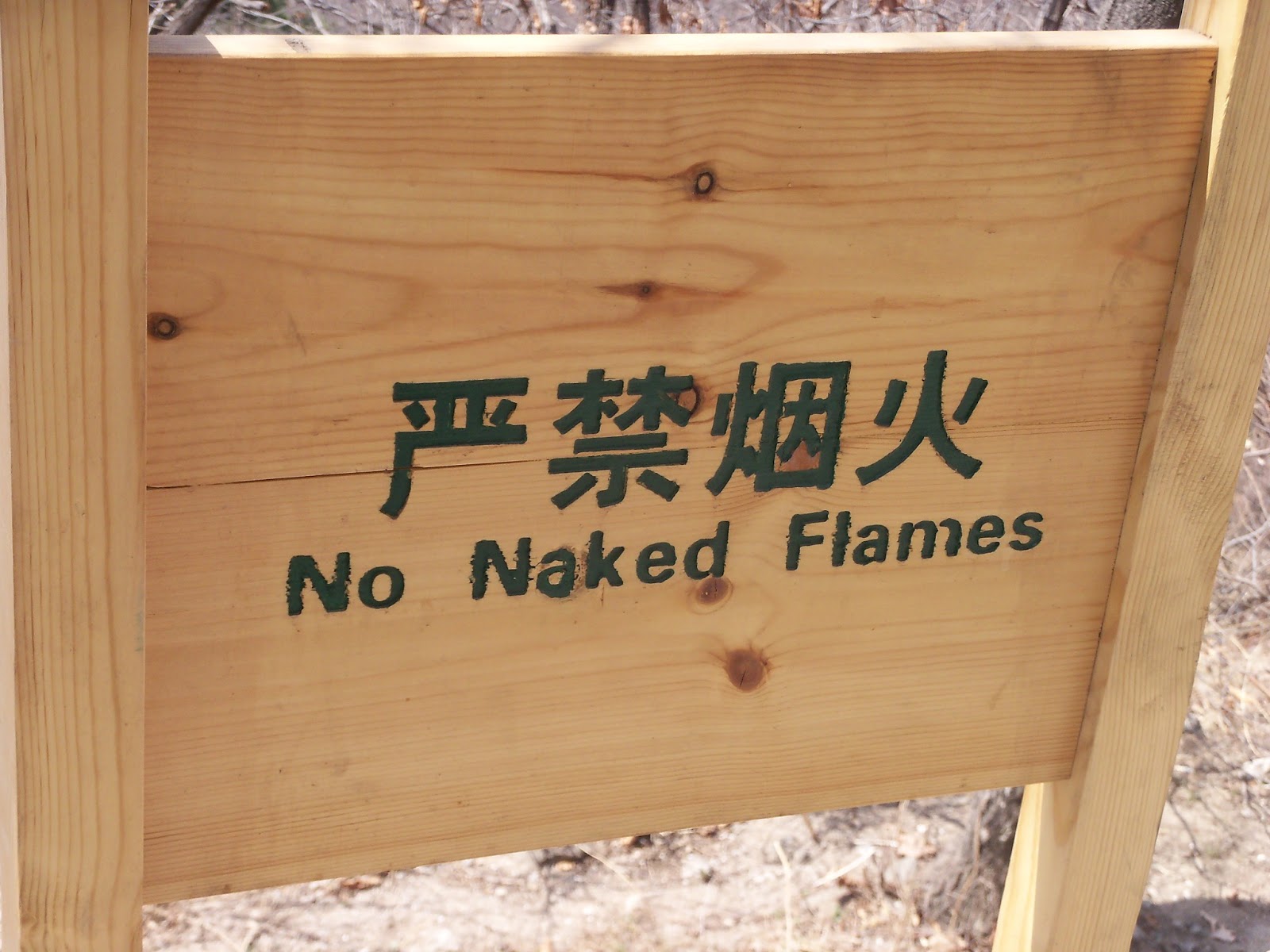 |
| Signs in China are good examples of the "missing link" that exists between English and Chinese. |
In China, most students who have reached the university age, at a mid to high level university, have been taking English classes, and have done okay in them, since they were about 10 years old. Sometimes even younger. And many of them have taken extracurricular courses throughout their high school lives to improve their English. Additionally, many of them love American television shows (particularly Gossip Girls and Vampire Diaries) and watch them regularly. So, for the most part, they have a general competency in English.
However, the majority of them have learned English from other non-native English speakers, and they learn English the same way American's learn Spanish or French in high school. And unless you are incredibly lucky, in America, and in China, you are not likely to have a teacher who is a native speaker of whatever language you are learning. So, many non-native Spanish-speaking Americans can "speak" Spanish. So long as it is unaccented, slow, and we stick to the basics. And in China, it is the same; if the English is spoken slowly, we stick to those prefabricated conversations, and our English is accented in Chinese (difficult for American teachers to achieve), everything is fine. This is true for many of our students, especially those who are non-English majors. Most universities still require students to take English courses for their first 2 years of study (some universities mandate the entire 4 years) even if your are not an English major or pursuing a career where English is going to be used regularly.
 |
| Mutianyu section of the Great Wall, Beijing |
It also does not help that English and Chinese do not translate well, in a literal way. I am very grateful for the way I learned Chinese, which was largely learning the meaning of several often used phrases, rather than learning the translation. Allow me to demonstrate why the translation can be misleading. The phrase for "be careful" or "watch out" (it's used interchangeably) is Xiǎoxīn. However, it's literal translation into English is "little heart". The phrase "bu hao yi sa", is a very informal way to say "I'm sorry" or sometimes "excuse me." But it's literal translation is something like "not good something". And for just one more example, the word "panda" in Chinese is Xióngmāo, but the literal translation is "bear cat". Needless to say, if a student tries to directly translate their Chinese question or phrase into English, it still might not make sense, which, as you can imagine, causes some problems in teacher-student communication.
 |
| Tianzi Mountain, Zhangjiajie National Forest Park |
So, when I, as a foreign teacher entered my first classroom, having experience working with non-English speakers, but not by any means in a teaching capacity, I stood in front of a classroom of very attentive and quietly excited students whose expectant faces quickly clouded in confusion when I began to introduce myself. Because there I was with my American accent, throwing out strange vocabulary, and speaking waaaaay too quickly (even though I thought I was going slowly). And if you remember from my earlier blog, my first class was with non-English majors.
My first few months of teaching were frustrating, because I could tell that of the 40 students in my classroom, only about 10 of them were following me with ease. The others may have been following, but Chinese students are reluctant to speak in class, so I had no idea if they were following each lesson. Eventually you learn to read your students, and you get really skilled at simplifying your language. However, what I have discovered probably worked the best is to provide non-verbal ways to reinforce concepts in class. You can do this through providing pictures when teaching vocabulary. You can use videos from the internet or ones you have created that help explain ideas or concepts. And everyday, even though you will sometimes feel foolish, you can use exaggerated body language and facial expressions to help clarify meaning.
 |
| In the Lashan Giant Buddha Park, Sichuan |
I taught 3 semesters of Oral English and while many of our student's pronunciation was fine, they spoke with almost zero inflection and with sometimes strange or incorrect intonation. They had a very wooden, flat presentation style, which was also affecting comprehension for those listening to their speeches. We decided that the medium we were going to use to improve their speaking was going to be through the creation and performance of skits. We thought that getting them to improve their intonation and inflection would be easier during exaggerated dramas. We thought that this would be effective, fun, and might relax that wooden/flat quality. However, we soon learned that getting them to express themselves not only verbally, but also through body language and facial expression, was extremely difficult. Because they were unused to giving this kind of performance and because they were embarrassed and shy. And the most effective way to get them up and moving and performing was to model exactly what we wanted them to do. This meant that we were modeling skits for our students, and I think it made a difference. After we were willing to get up in front of them and be silly, the students were more willing to do the same. Some of them were even enthusiastic about it and we discovered that we had several natural performers in our classes.
I realized that teaching is a lot like performing sometimes. Like a good performer, you need to keep their attention, and you can do that with engaging strategies, and also with your teaching style. And when you ask students to take a risk, and public speaking and skits would be considered a risk by many shy students, you need to be willing to show them its not that scary and demonstrate exactly what you are expecting from them when they perform their final skits. In my next post, I will go into more detail about how we structured the skits, the strategies we used, and the problems we encountered and how we improved the course in later semesters.
 |
| Outside of a restroom in Lashan, Sichuan |


No comments:
Post a Comment